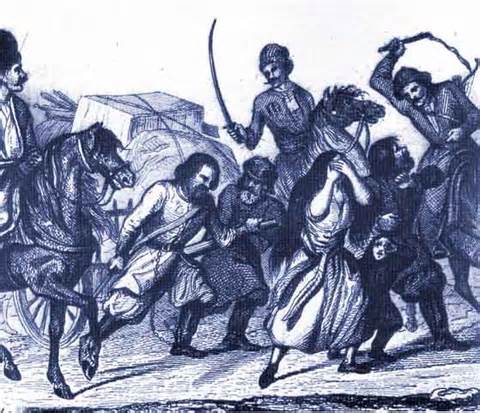


55% of modern day Cossacks share this origin.īoghossian - G2: Caucasus of Europe. This lineage is found in central & western Asia, India, and in Slavic populations of Europe. These people were also believed to be the first speakers of the Indo-European language group. This lineage is thought to descend from a population of the Kurgan culture, known for the domestication of the horse (circa 3000 B.C.E.). The R1a lineage is believed to have originated in the Eurasian Steppes north of the Black & Caspian Seas. 30% of modern day Cossacks have Haplogroup I or sub-haplogroups I1 and I2.īiryukov - R1a: Eastern European Origin. The Vikings belong to this Haplogroup and they were among the earliest settlers of Western Russia, Ukraine, and Poland. Today, this branch is found distributed in the Balkans and Eastern Europe, and extends further east with Slavic-speaking populations. The Balkan countries likely harbored this subgroup of I during the Last Glacial Maximum. 55% of modern day Cossacks share this origin.īielawa - I: Central European Origin. 5% of modern day Cossacks share this origin.īestwina - R1a: Eastern European Origin. Essentially, Sarmatia was a collection of independent tribes, that encompassed parts of modern Russia, Ukraine, the Baltic States, Central Asian nations and into central European countries such as Romania and Poland. The territory of the Sarmatians was an expansive stretch of land reaching from the Caspian Sea in the East to the Vistula River in the West, and as far south as the Danube. They were a blend of Iranian nomadic horse tribes that were likely descended from the Scythians. The Sarmatians are the likely origin of Haplogroup G. The G2 branch of this lineage (containing the P15 mutation) is found most often in Europe and the Middle East. The highest concentration of Haplogroup G men is found today in the Caucasus Mountains, in several small states to the south of Russia, and in Georgia, Armenia, and Azerbaijan. This is a fairly rare haplogroup found mostly in men from the Mediterranean, the Caucasus, and the Middle East. 3% of modern day Cossacks have J, J1, or J2 origin.Īmshukov - G2: Caucasus of Europe. About 43% of Ashkenazi Jews have this origin. These four groups of people were settlers of Russia, Ukraine, and Poland as early as the year 1000 AD. Ashkenazi Jews, and 1/3 of Ossetians, Turks, and Armenians belong to this Haplogroup. Mostly found in the Middle East, Mediterranean, and North Africa. 3% of modern day Cossacks have J, J1, or J2 origin.Īloshyn - J2: Semitic Origin. They are regarded as the ancestors of the Western Turks, the present-day inhabitants of Turkey, Azerbaijan and Turkmenistan.Īlkaravich - J1: Semitic Origin. The Seljuk Turks migrated from Central Asia into mainland Iran formerly known as Persia. This haplogroup is found primarily in India and Sri Lanka, and has also spread into several Middle Eastern populations (Turks, Saudis, and Pakistanis).


 0 kommentar(er)
0 kommentar(er)
